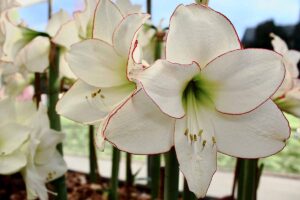Sweet pea flowers herald the arrival of summer – they seem to embody the lazy, relaxing days ahead with their languorous, twining growth habit.
Weaving their way through fences, over archways, and up trellises, they languidly explore their world before producing colorful flowers to soak up the summer sun.
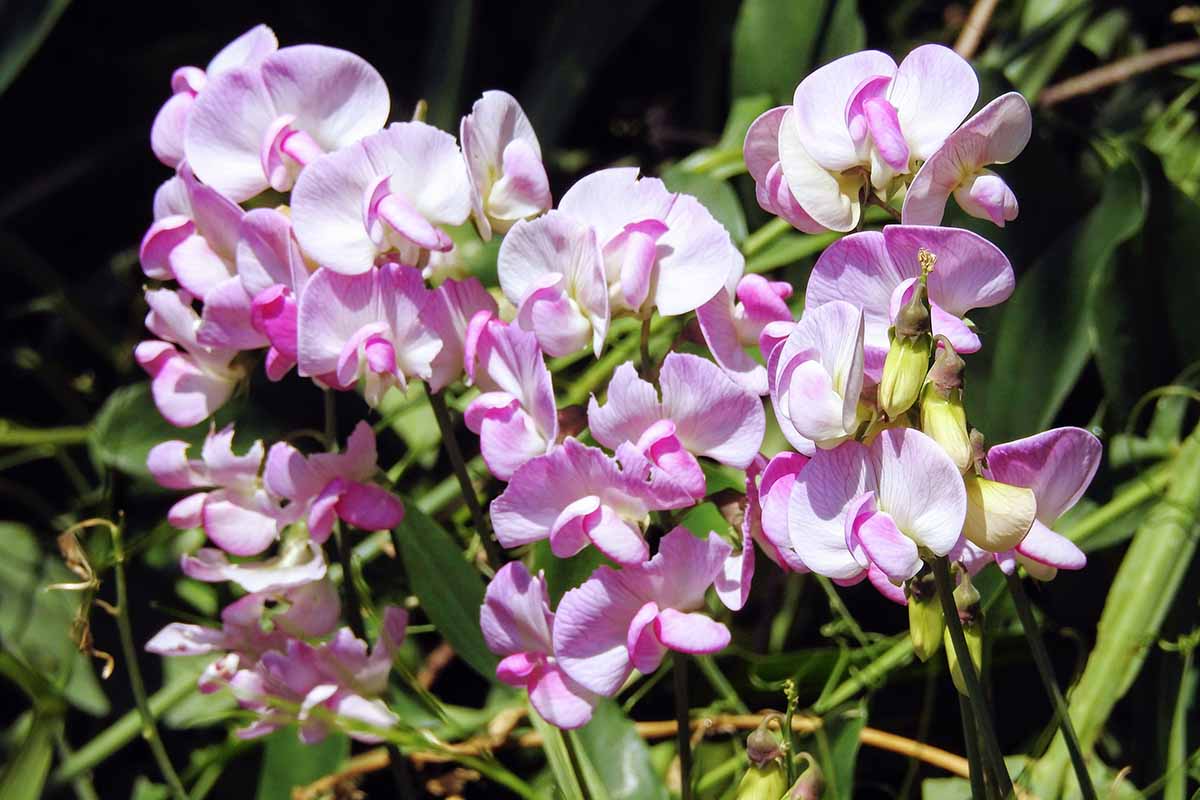
We link to vendors to help you find relevant products. If you buy from one of our links, we may earn a commission.
Despite their delicate appearance, sweet peas are pretty tough and don’t require much maintenance. But if you want the biggest blossom display possible, pinching will get you there.
Our guide to growing sweet peas has details about how to grow these summer flowers, and in this article, we’ll discuss how to pinch the vines to encourage the bushiest and most floriferous growth.
Here’s what I’ll cover:
What You’ll Learn
Why Pinch Sweet Peas?
So, what is pinching? Pinching is pruning, but in miniature. Instead of cutting off large branches, you’re removing small, herbaceous stems. Often, the growth is so fine that you can prune simply using your fingernails.
Pinching a plant at the right time and in the right place encourages bushier growth and encourages more flowers. And isn’t that what we want from our sweet peas?
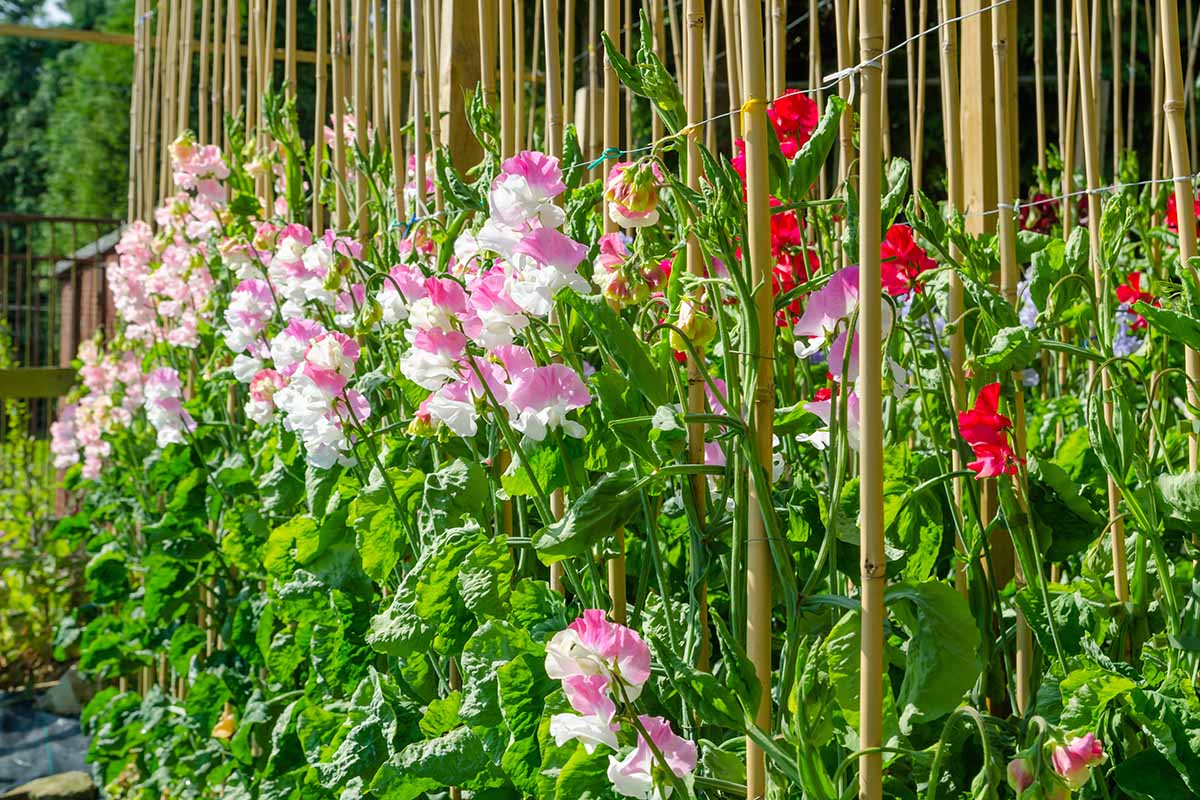
The reason this happens is because when we remove a bit of the growth tip, it causes the plant to move growth hormones known as auxins away from the pruned area to other parts to create more growth.
It also temporarily reduces the apical dominance, which is when the plant puts most of its energy into growing the main vertical stem.
When you pinch, the plant doesn’t send auxins to that spot because it is perceived as a damaged and thus unproductive area so it focuses on other areas instead.
Shape Young Plants
As the young vines grow, pinching will encourage them to grow bushier and fuller.
When the sweet pea is about six inches tall, use your fingernails or a clean pair of scissors to remove the main, central tip.
Using your fingernails is preferred, since it makes the smallest wound. But sharp scissors work, too.

You want to take the central stem back far enough that there are only three or four leaf nodes left behind.
Depending on how leggy your plant is, this might mean taking off half the stem or just pinching off the tip.
A six-inch tall plant can be pinched at the tip, while a foot-tall, branched vine can be pinched in several areas.
A fully-grown sweet pea can even be pinched to remove a single vine and encourage branched growth.
You don’t need to do this again when the vines are young and still have a single stem.
Once is enough to encourage bushiness, but you’re going to want to do more pinching once the plant is more established.
Shape Maturing Plants
You don’t have to pinch older plants if you like how they look.
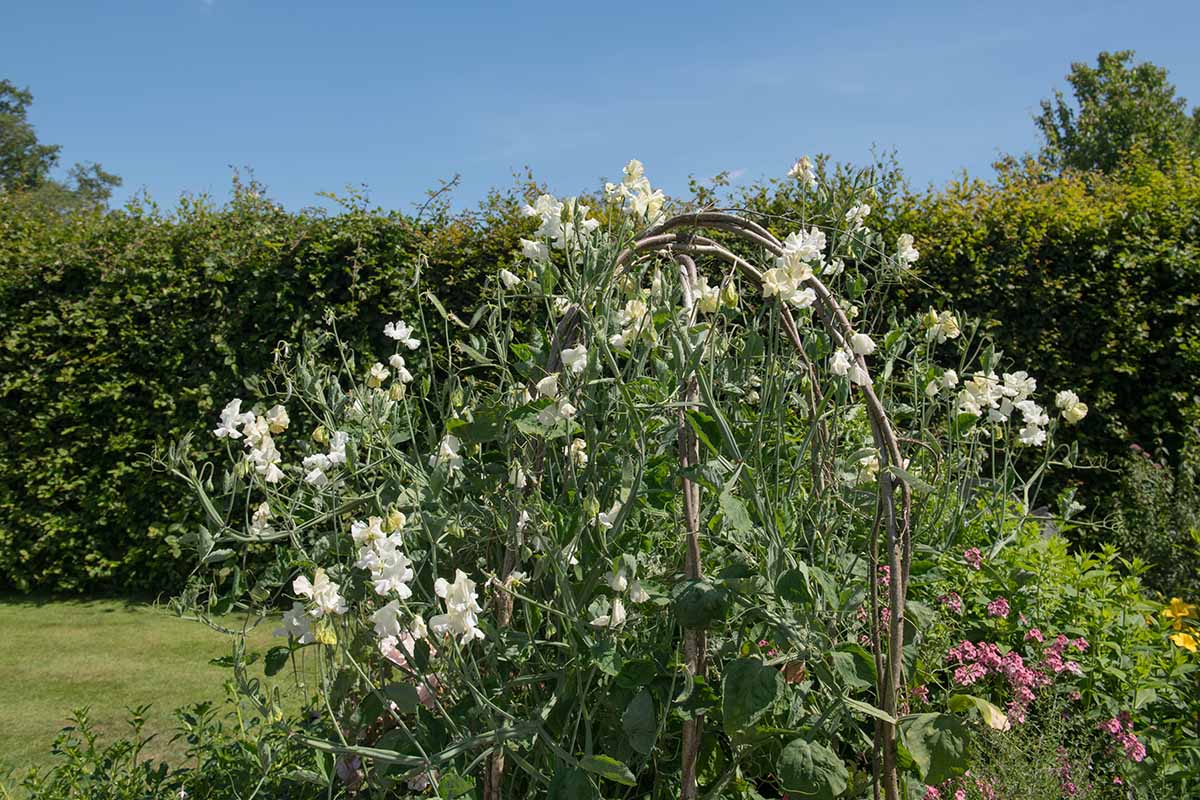
But if there are thinner areas without much branching or few leaves, or you want to encourage bushier growth, you can cut the vines.
In the thinner area, pinch a few stems back to the next leaf node. It should branch and send out more growth in that area.
Deadhead
As the blossoms mature and begin to fade, pinch or cut them off. This will encourage the plant to produce more flowers.
Just count back a leaf node or two and snip or cut the stem off. This removes the blossoms and takes the stem back far enough to encourage bushy, branching growth.

You want to avoid allowing it to form seeds because, at that point, it will stop producing more flowers and start to die back.
If any pods do form, remove them as soon as you see them.
Of course, if you intend to harvest the seeds, go ahead and let the pods form and wait for them to mature.
Our guide explains when and how to harvest and store the seeds for planting. Note that these pods are not edible.
Give ‘Em the Pinch
You could just let your sweet peas do their thing, but pinching will encourage the plants to produce more flowers for a longer period of time, so it’s worth the minimal effort if you ask me.
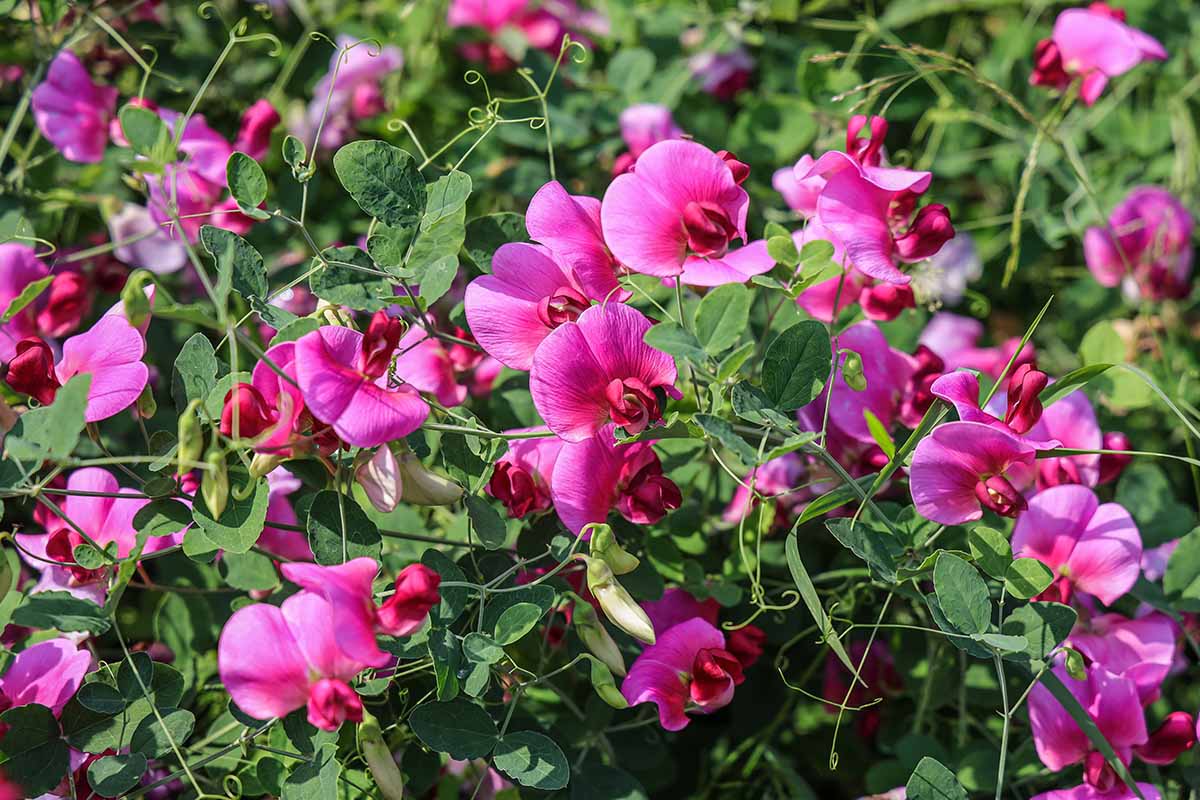
How do you grow your sweet peas? Do you trail them along a fence? Or have them climb up an archway? Let us know in the comments section below!
If you’d like to learn about a few other flowering vines in your garden, check out these guides next:

